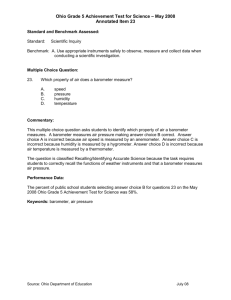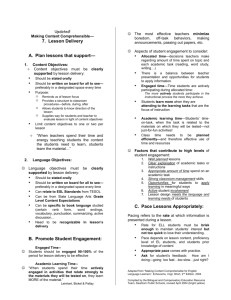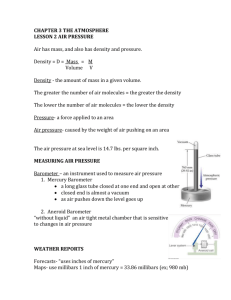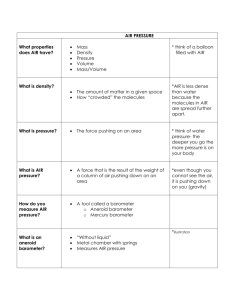Katya's Powerpoint
advertisement
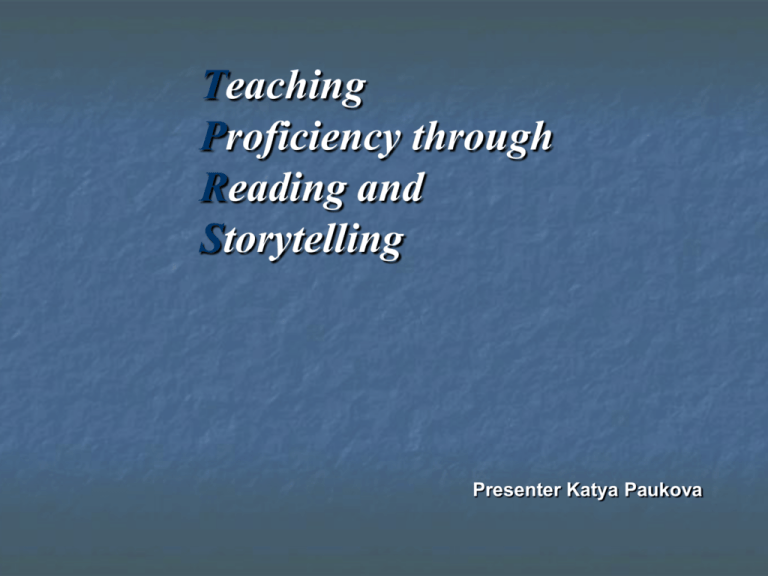
Teaching Proficiency through Reading and Storytelling Presenter Katya Paukova Dr. James Asher: Total Physical Response Dr. Stephen Krashen & Dr. Tracey Terrell: The Natural Approach Blaine Ray: TPR Storytelling Krashen’s Theory of Second Language Acquisition 5 Hypotheses The Acquisition-Learning hypothesis The Monitor hypothesis The Natural Order hypothesis The Input hypothesis The Affective Filter hypothesis Acquiring a language is effortless and involuntary The right brain acquires information 1800 times faster than the left (Natural Order) Languages can only be acquired when the affective filter is low At least 90% input (vs. 10% output) (Input Hypothesis) At least 90% acquisition (vs.10% learning) Nationally, 50% of FL students drop out before 2nd year. 70% drop before the 3rd year. Less than 10% proceed to college language studies. The 3 Steps of TPR Storytelling Step 1: Establish meaning Write vocabulary word in target language and English Color-code Gesture / Mneumonic devices / memory aids Ask the students personal questions utilizing vocabulary Ask students about each other Seek responses that make the students look good Seek liars Encourage unusual responses Watch barometer students ensure 100% comprehension If possible, use the information from the PQA in the PMS Step 2: Ask the Story 1. PACE Slow, deliberate, separated Step 2: Ask the Story 1. PACE 2. ASK THE STORY (Circling) Ask questions Circle the words for negation Ask low-level questions (students answer yes/no/ one word) Leave blanks --students fill-in Make mistakes (students correct) Ask who? What? Where? When? How much? How many? How often? Ask how and why (last) Never make two statements in a row. Step 2: Ask the Story 1. PACE 2. ASK THE STORY (Circling) 3. PACE-SETTER (BAROMETER) Teach to the eyes! Look at the audience, not at the actors. Time-out sign The pause Responding to a Zero response Staying “in-bounds.” (The “boundaries” are the locations, the language that the barometer student has already mastered, the words or phrases of the day, and completely comprehensible cognates.) Step 2: Ask the Story 1. PACE 2. ASK THE STORY (Circling) 3. PACE-SETTER (BAROMETER) 4. PERSONALIZATION Use compliments (Who is most handsome boy in world? Brad Pitt or Pierre?) Use the names of the students (and personalize the story) Use the information from the PQA. Really listen to and enjoy student responses. Step 2: Ask the Story 1. PACE 2. ASK THE STORY (Circling) 3. PACE-SETTER (BAROMETER) 4. PERSONALIZATION 5. DRAMATIZE Get volunteer actors Coach melodramatic acting Over-react Students act-out the story while teacher blocks, directs and maneuvers Use 3 locations Step 2: Ask the Story 1. PACE 2. ASK THE STORY (Circling) 3. PACE-SETTER (BAROMETER) 4. PERSONALIZATION 5. ACTING 6. BIZARRE, EXAGGERATED AND PERSONALIZED Get student input Encourage audience participation (¡Ooo la la!/¡Oooh!/¡Oh no!/ ¡Sí!) Exaggerate or drastically minimize size, quality and quantity Step 2: Ask the Story 1. PACE 2. ASK THE STORY (Circling) 3. PACE-SETTER (BAROMETER) 4. PERSONALIZATION 5. ACTING 6. BIZARRE, EXAGGERATED AND PERSONALIZED 7. BELIEVABILITY Demonstrate deep belief in the story! Personalize, combine details. “Casi” (almost) technique: (all in the target language) Use student responses. Exaggerate "How does he react?" (¿cómo reacciona?) Everything is possible in French class. Keeping control of the story: It’s my story! Never ask why. Es un secreto. Step 2: Ask the Story 1. PACE 2. ASK THE STORY (Circling) 3. PACE-SETTER (BAROMETER) 4. PERSONALIZATION 5. ACTING 6. BIZARRE, EXAGGERATED AND PERSONALIZED 7. BELIEVABILITY 8. POP-UPS Use translation to clarify grammar and structure. (Pop-up meaning) Pop-ups: Focus on the Meaning of structures (1-5 seconds) Pop-ups through stories Pop-ups through dialogue Pop-ups through PQA Pop-ups through Reading Step 3: Read and discuss Translate reading passages, PMSs, extended readings and novels. One student translates. Teacher provides instant translation for incomprehensible words. Make sure that students understand every word. Use translation to explain grammar and meaning in 5-15 seconds. Discuss the reading in the target language. Ask personalized questions about the reading. Discuss the cultural information in the story, geography. Use the story to teach life lessons. Act out scenes. Discuss what the character learns in the story. Use level-appropriate reading materials Other essential reading components: Free Voluntary Reading and Read Alouds How is language learned ? By listening and understanding or reading and understanding comprehensible input (CI). What is the main difference between baby acquisition and classroom acquisition? Time. A baby who hears a language for 10 hours a day for 6 years has over 20,000 hours in the language. Even a teacher might have had 5 to 10 thousand hours learning the language. We have students for 400 to 600 hours if we are lucky. Since time is the main difference, what do we have to do to the CI in the classroom for fluency? We have to make language repetitive for fluency. Students can’t produce the language unless they have heard and read the structures over and over. What do we teach in a TPRS class? We teach the basic structures needed for fluency. Structures are how the words fit together in a sentence so they sound right to a native speaker. What does it mean to be inbounds or out of bounds? In-bounds means we make the class comprehensible to the slowest processing student. “In-bounds” = words they already know, today’s target structures and cognates. If we are out of bounds there is at least one student who does not understand something. What are the three steps of TPRS? A. Establish meaning. B. Ask a story. C. Read and discuss. How many locations are there in the story? In a basic model there are three locations. Stories have a problem and a solution. This model is an easy problem / solution structure. In advanced TPRS classes we can diverge from this model. What is the purpose of each location? In the first location we introduce the problem. In the second location we try to solve it but we don’t. We also might change the problem so that it isn’t solved. In the third location we solve the problem. Locations give us opportunities to get more repetitions. How do we get more repetitions? We get more repetitions by adding details and repetitive questions. How do we make the repetitions interesting? We make the details unexpected and we personalize them. What is the goal in a TPRS class? To provide repetitive and compelling comprehensible input. What are the rules of TPRS? Rule #1: Present meaning first Rule #2: Present it in a context Rule #3: Keep it understandable and interesting Rule #4: Repeat in context FISH FOR A DETAIL STATEMENT ? THAT GETS A “YES!” EITHER/OR QUESTION ? THAT GETS A “NO” No... there isn’t... there is… WHO? WHAT? WHERE? WHEN? WHICH? HOW? HOW MUCH? HOW MANY? WHY? Level-appropriate TPRS Level 1: The boy wants/wanted to buy a car. Level 2: The boy who worked all year, bought a car yesterday. Level 3: The boy will buy a car tomorrow if he has enough money. Level 4: If he worked a little harder, he would have bought a car by now. Questioning in levels 1-2 Practice no more than three structures during one-period class time Repeat the structure 60-70 times Recycle the structures from the previous days Questioning in upper levels Less frequent daily repetitions Recycle the introduced structures all year long Create more advance PQAs Provide constant “pop-ups” about the advanced, more complex structures Use the authentic materials for readings and discussions “It takes energy to conduct classes that are dominated by comprehensible input. It takes courage to abandon the familiar textbook-driven grammar syllabus. But such courage is necessary if we are going to produce a generation of people who do not say, “I took two years of French and I can’t even order a cup of coffee.” Susan Gross What next???? RESOURCES: www.moretprs.net moretprs@yahoogroups.com www.tprstorytelling.com www.susangrosstprs.com www.tprstories.com/ntprs www.tprstories.com/ijflt www.BlaineRayTPRS.com www.comprehensibleinput.com www.FluencyFast.com
